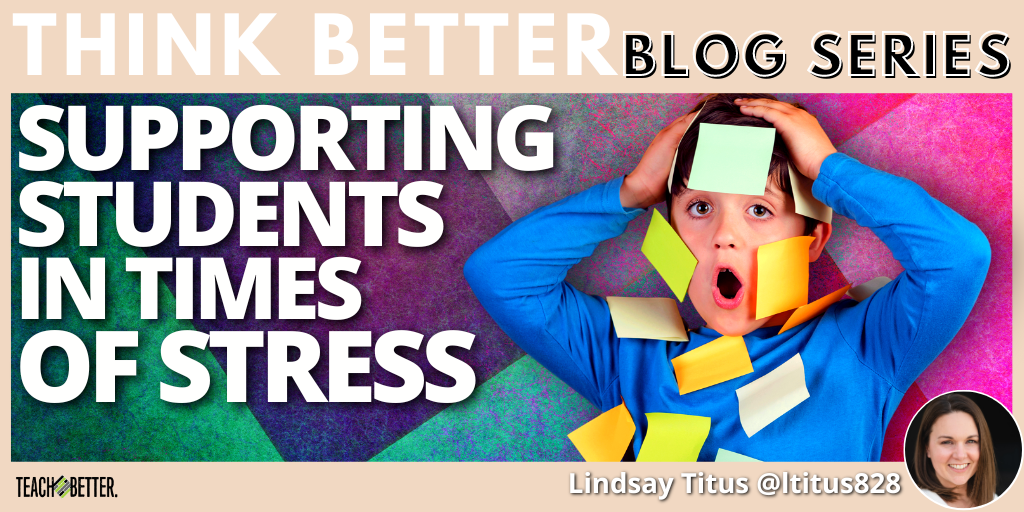TL;DR:
- Supporting students during times of stress requires a mindful and empathetic approach.
- Four steps to help students through stressful situations: self-reflection and emotional awareness, understanding the student’s needs and desires, evaluating the environment, and crafting an empathetic response.
- By practicing these steps, educators can foster emotional well-being, resilience, and growth in students while creating a nurturing and supportive environment.
Supporting Students in Times of Stress: How to Remain a Source of Strength for All Students
As educators, we have a profound impact on the emotional well-being of our students. Pretty loaded sentence right? For some of you reading that sentence, you might feel intense pressure. While for others, you may get a sense of purpose and passion. It might ignite a little pep in your step, if you will. And whichever response you had (or maybe you’re somewhere in the middle), it’s okay!
Supporting students during times of stress requires a mindful and empathetic approach. Click To TweetImpact Starts With Us
Something that is so important to remember is that to have an impact on the well-being of students, we have to understand and support their moments of stress and anxiety with sensitivity and empathy. By understanding how our actions can either provide a source of strength or escalate their dysregulation, we can provide ourselves with the opportunity to use our own authenticity to strengthen connections and support our students!
Something I’ve learned along the way as an educator is the importance of understanding how our responses have the ability to either engage with a student or enrage a student. Through my training and experiences, I’ve come to highlight four main steps I take when helping a student through a stressful situation that allows me to focus on remaining a source of strength for the student.
It is possible to assist students through stress and continue to foster a supportive environment for their emotional growth and well-being. These four steps will help you to do just that!
Step 1: Self-Reflection and Emotional Awareness
The first step in supporting a student experiencing stress begins with looking within. By asking ourselves, “What am I feeling right now?” and “What do I want the student to experience from me at this moment?” we cultivate self-awareness and acknowledge our own emotional state. Honoring our emotions enables us to be a pillar of strength for the student, rather than contributing to their distress. By recognizing and managing our own feelings, we create a solid foundation for supportive interactions to follow.
Step 2: Understanding the Student’s Needs and Desires
Once we have acknowledged our emotions, it’s important to shift our focus to the student. We must pause and consider what the student might be feeling or needing at that very moment. If they had the ability to articulate their wants and needs, what would they ask for? Taking the time to empathize and understand their perspective allows us to provide the necessary support. By being aware of their needs, we can take appropriate actions to help them navigate their stress and anxiety.
Step 3: Evaluating the Environment
The third step involves assessing the impact of the immediate environment on the student’s stress levels. We must ask ourselves, “How is the environment influencing the student at this moment?” Perhaps there are factors in the surroundings that contribute to their distress. By identifying and modifying aspects of the environment, we can alleviate some of the stress the student is experiencing. Creating a calm and nurturing space can be instrumental in helping them regain their equilibrium.
Step 4: Crafting an Empathetic Response
Armed with a deeper understanding of our own emotions, the student’s needs, and the environmental influences, we are now ready to formulate a thoughtful response. By considering the information gathered through our senses and thoughts, we can choose a response that is supportive and engaging, rather than escalating their stress response. Our aim is to provide comfort, guidance, and reassurance to the student, helping them find healthy ways to cope with their stressors.
[scroll down to keep reading]Supporting students during times of stress requires a mindful and empathetic approach.
It’s a process we get to practice each time we interact with students experiencing stress. By using this four-step process, we can foster an environment that promotes emotional well-being, resilience, and growth for our students and ourselves!
Remember, self-reflection, understanding the student’s needs, evaluating the environment, and crafting empathetic responses are integral to creating a nurturing space. The goal of this space is for students to feel heard, understood, and supported. Together, we have the opportunity to prioritize the emotional well-being of our students. Helping students to navigate life’s challenges with strength and resilience helps us create communities of support for all!
About Lindsay Titus
Lindsay Titus is a K-12 Behavior Specialist with a license in behavior analysis. As a Board Certified Behavior Analyst, Lindsay coaches and trains educators on the study of behavior and how to implement evidence-based behavior principles in simple and easy ways! With experience as a classroom special education teacher, and behavior specialist in public schools, residential placement, and private settings, Lindsay enjoys working with all educators looking to reignite their passion for education, connect with all students, and conquer challenging behavior in any classroom setting.





